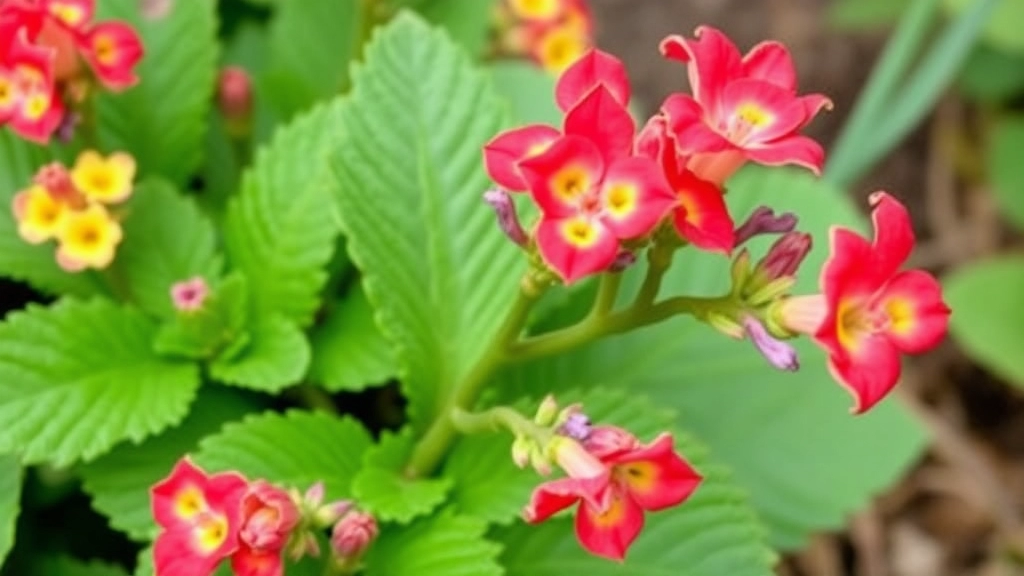Mastering Kalanchoe Flaming Katy Care
Looking to master Kalanchoe Flaming Katy care? This vibrant, easy-to-maintain plant, also known as Kalanchoe blossfeldiana, thrives with the right approach. Let’s dive into practical tips on lighting, watering, soil, and more to keep your Flaming Katy flourishing.
From optimal light conditions and watering techniques to preventing root rot and dealing with pests, we’ve got you covered. Whether you’re aiming to encourage blooming or propagate new plants, this guide will help you ensure your Flaming Katy remains healthy and vibrant all year round.
Ideal Light Conditions for Flaming Katy
Are you struggling to keep your Flaming Katy thriving? One of the most crucial aspects of its care is ensuring it receives the right amount of light.
Understanding Light Requirements
Flaming Katy, or Kalanchoe blossfeldiana, flourishes in bright, indirect sunlight. It’s essential to strike a balanceâtoo little light can lead to leggy growth, while too much direct sunlight can scorch the leaves.
Optimal Light Conditions:
- Bright Indirect Light: Place your plant near a window where it can receive plenty of light without direct sun exposure.
- Supplemental Lighting: If natural light is limited, consider using grow lights to mimic ideal conditions.
- Rotate Regularly: To ensure even growth, rotate your Flaming Katy every few weeks.
Seasonal Considerations
The light conditions can vary with the seasons. In winter, the days are shorter, so you might need to adjust its location or provide additional light.
Proper Watering Techniques to Avoid Root Rot
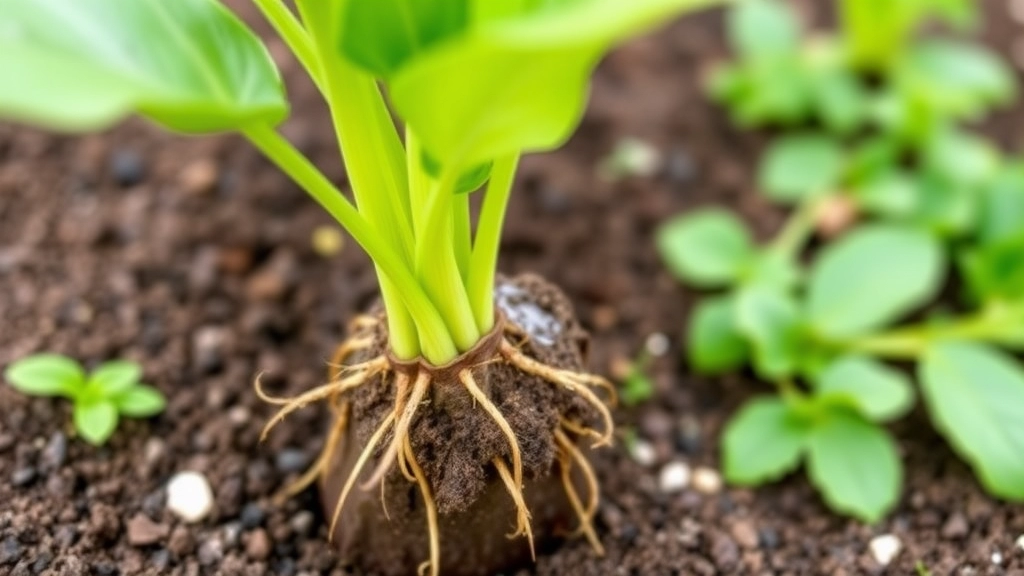
Ever found yourself staring at your Flaming Katy, wondering if you’ve watered it just right? You’re not alone! One of the biggest worries for plant lovers is root rot, and it can sneak up on you if you’re not careful.
Understanding Watering Needs
Flaming Katy, or Kalanchoe blossfeldiana, thrives on a delicate balance of moisture. Here’s how to keep it happy:
- Check the Soil: Always poke your finger about an inch into the soil. If it feels dry, it’s time to water. If it’s still moist, hold off a bit longer.
- Water Thoroughly: When you do water, give it a good soak. Ensure water drains out from the bottom of the pot. This way, the roots get what they need without sitting in soggy soil.
- Frequency Matters: In the warmer months, you might need to water every week, while in cooler months, every two weeks should suffice. Adjust based on your home’s humidity and temperature.
- Use the Right Pot: Make sure your pot has drainage holes. This is crucial! Without proper drainage, water can pool at the bottom, leading to root rot.
Signs of Overwatering
Keep an eye out for these red flags:
- Yellowing leaves
- Wilting, despite wet soil
- A musty smell coming from the pot
If you notice these, it’s time to reassess your watering routine!
Best Soil Mix for Healthy Growth
Choosing the right soil mix is crucial for the healthy growth of your Flaming Katy. Many plant enthusiasts often wonder: What kind of soil does my Flaming Katy need to thrive?
Ideal Soil Composition
Flaming Katy, also known as Kalanchoe blossfeldiana, prefers a well-draining soil mix. Here are some key components to consider:
- Cactus Mix: A commercial cactus mix is an excellent base as it provides good drainage and aeration.
- Perlite: Adding perlite improves drainage and prevents soil compaction.
- Pumice: This lightweight material promotes airflow and retains some moisture without becoming soggy.
- Organic Matter: A small amount of compost can enrich the soil with nutrients.
DIY Soil Mix Recipe
If you prefer to create your own mix, consider the following ratio:
- 2 parts cactus mix
- 1 part perlite
- 1 part pumice
- Optional: 1 part compost for added nutrients
Importance of pH Level
Flaming Katy thrives in slightly acidic to neutral pH levels (around 6.0 to 7.0). Regularly check the pH of your soil to ensure it remains within this range.
Tips for Soil Maintenance
- Avoid Heavy Soils: Stay away from garden soil or heavy potting mixes, as these retain too much moisture.
- Repotting: When repotting, always refresh the soil mix to ensure your plant has access to the best nutrients. For more detailed guidance, check out our tips on why Kalanchoe flowers might wilt and complete care guide for Kalanchoe Paddle Plant.
Maintaining Optimal Temperature and Humidity for Flaming Katy

Are you struggling to keep your Flaming Katy thriving? One of the key factors to its success is maintaining the right temperature and humidity.
Ideal Temperature Range
Flaming Katy, or Kalanchoe blossfeldiana, flourishes best in a warm environment. Here are some essential temperature guidelines:
- Daytime: Aim for 20-24°C (68-75°F).
- Nighttime: A drop to around 15-18°C (59-65°F) is ideal.
- Avoid extremes: Keep the plant away from cold drafts and sudden temperature changes.
Humidity Levels
While Flaming Katy prefers a drier atmosphere, it’s essential to monitor humidity levels:
- Optimal Humidity: 40-60% is perfect for healthy growth.
- Avoid high humidity: Excess moisture can lead to fungal issues.
Tips for Maintaining Temperature and Humidity
- Location Matters:
- Place your Flaming Katy in a well-lit room with stable temperatures.
- Avoid placing it near heating vents or air conditioning units.
- Use a Thermometer and Hygrometer:
- Regularly check the temperature and humidity levels to ensure they stay within the ideal range.
- Humidity Control:
- If your home is too dry, consider using a pebble tray with water or a humidifier, but avoid direct misting on the leaves.
- Seasonal Adjustments:
- During winter, be mindful of colder drafts and adjust your plant’s location accordingly.
How to Fertilize Flaming Katy for Continuous Blooming
After ensuring your Flaming Katy receives the ideal light and water conditions, the next crucial step is fertilization. You might be wondering, “How do I keep my Flaming Katy blooming beautifully throughout the year?”
Choosing the Right Fertilizer
For optimal growth and blooming, select a balanced, water-soluble fertilizer. Look for a formula with equal parts nitrogen, phosphorus, and potassium (NPK), such as 20-20-20.
- Frequency: Fertilize every 4-6 weeks during the growing season (spring and summer).
- Concentration: Dilute the fertilizer to half the recommended strength to avoid burning the roots.
Timing is Everything
- Spring Awakening: As your Flaming Katy comes out of dormancy in spring, it’s the perfect time to start fertilizing.
- Stop in Autumn: Cease fertilization in late autumn to allow the plant to rest during winter.
Application Tips
- Water First: Always water your plant before applying fertilizer. This helps to prevent root burn.
- Even Distribution: Apply the diluted fertilizer evenly around the base of the plant, avoiding direct contact with the leaves.
- Monitor Growth: Keep an eye on your plant’s response. If you notice excessive leaf growth but fewer blooms, reduce the nitrogen content.
Additional Nutrients
Consider supplementing with a bloom booster, particularly during the flowering phase. Look for fertilizers higher in phosphorus (the middle number in NPK) to encourage more vibrant blooms.
For more detailed care instructions, check out our Complete Guide to Kalanchoe Plant Care and learn how to keep your Kalanchoe blooming all year.
Pruning Techniques to Shape the Plant
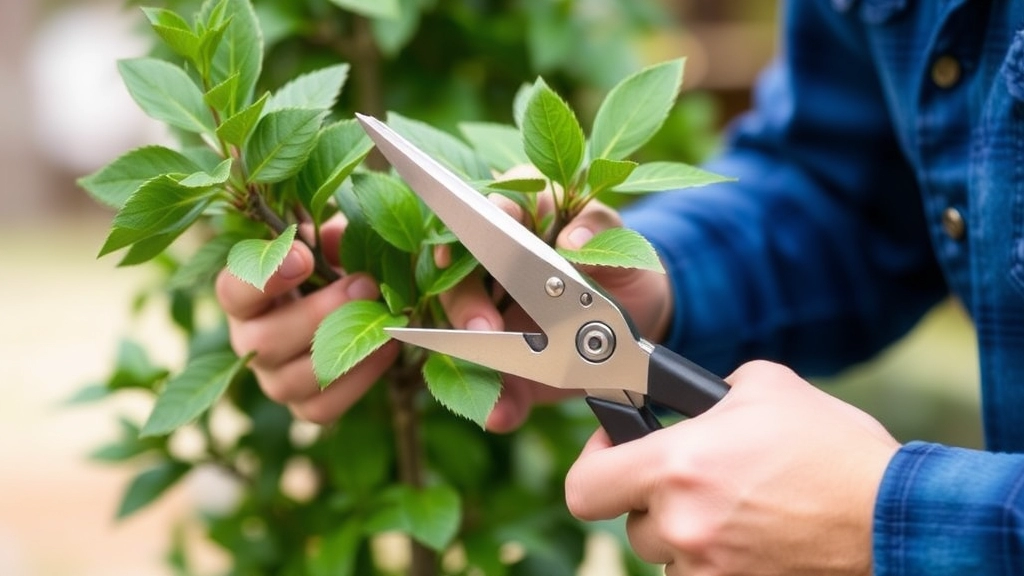
So, you’ve got your Flaming Katy thriving, and now you’re wondering how to keep it looking its best.
Pruning is key to shaping your plant and encouraging healthy growth.
Why Prune?
- Promotes bushiness: Regular pruning helps create a fuller, more vibrant plant.
- Encourages blooming: Cutting back can stimulate new flowers.
- Removes dead or damaged leaves: This keeps your plant healthy and looking fresh.
When to Prune:
- After blooming: The best time to prune is right after your Flaming Katy has finished its flowering cycle. This way, you won’t interfere with any budding blooms.
How to Prune:
- Gather your tools: You’ll need clean, sharp scissors or pruning shears.
- Inspect the plant: Look for any dead, yellowing, or damaged leaves.
- Cut strategically:
- Trim back the stems to just above a leaf node. This encourages new growth.
- Remove any leggy growth to maintain a compact shape.
- Shape it up: If you want a specific shape, don’t be afraid to trim back more aggressively.
Tips for Success:
- Don’t overdo it: A little pruning goes a long way. Aim to remove no more than 20-30% of the plant at once.
- Stay clean: Always disinfect your tools before and after use to prevent disease.
Pruning can feel a bit daunting, but once you get the hang of it, it’s quite rewarding. Your Flaming Katy will thank you with lush growth and vibrant blooms.
Propagation Methods: Cuttings and Offsets
When considering how to expand your Flaming Katy collection, understanding propagation methods is essential. Many plant enthusiasts often wonder about the best techniques to achieve successful propagation without complications.
Propagation through Cuttings
Taking cuttings is one of the most popular and effective methods for propagating Flaming Katy. Here’s how to do it:
- Select a Healthy Stem: Choose a healthy stem that is at least 2-3 inches long.
- Make the Cut: Use clean, sharp scissors to snip off the stem just below a node.
- Let it Callous: Allow the cutting to dry for a few hours or overnight. This helps to prevent rot.
- Plant the Cutting: Place the cutting in a well-draining soil mix, ensuring the node is buried.
- Water Sparingly: Mist the soil lightly, avoiding overwatering. Keep the soil slightly moist.
Propagation through Offsets
Offsets, or small plantlets that grow at the base of the main plant, are another easy way to propagate Flaming Katy. Here’s how:
- Identify Offsets: Look for small plantlets that have developed roots.
- Carefully Remove: Gently twist or cut the offset away from the main plant.
- Replant: Plant the offset in a suitable soil mix, ensuring it is well-draining.
- Water: Water lightly to help it settle into its new home.
Key Tips for Successful Propagation
- Timing: Spring is the best time for propagation, as the plant is actively growing.
- Humidity: Maintain a humid environment for cuttings by covering them with a plastic bag or a clear container.
- Light: Place cuttings in bright, indirect light to encourage growth.
For more detailed advice on growing and caring for your Flaming Katy, check out our Flaming Katy care guide. If you’re interested in exploring other Kalanchoe varieties, our Kalanchoe species identification guide might be useful.
Common Problems and How to Solve Them (Pests, Diseases)
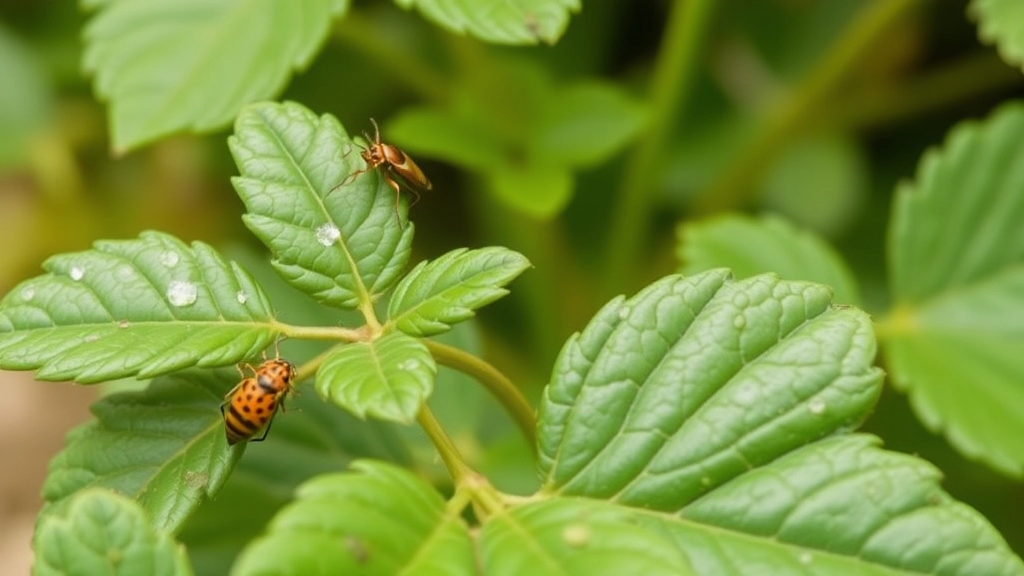
So, you’ve got your Flaming Katy thriving, but what happens when things go awry?
Pests and Diseases to Watch Out For:
- Mealybugs
These little white fluff balls can be a nightmare.
Solution: Wipe them off with a cotton swab dipped in rubbing alcohol. You can also spray the plant with insecticidal soap. - Spider Mites
Tiny and sneaky, these pests love dry conditions.
Solution: Increase humidity around the plant and spray with neem oil or insecticidal soap. - Leaf Spot
Brown spots on leaves can signal overwatering or poor air circulation.
Solution: Adjust your watering schedule and ensure good airflow. - Root Rot
A common issue from overwatering.
Solution: If you notice wilting leaves and mushy roots, repot in fresh, dry soil, and cut back on watering. - Powdery Mildew
A white, powdery substance on leaves? Not good!
Solution: Improve air circulation and treat with a fungicide.
Quick Tips for Prevention:
- Keep your Flaming Katy in a well-ventilated area.
- Avoid crowding your plants.
- Regularly inspect your plant for any signs of trouble.
Encouraging Reblooming with Light and Dark Cycles
Are you frustrated because your Flaming Katy isn’t blooming as much as you’d like?
Understanding the importance of light and dark cycles can make a significant difference in encouraging your plant to rebloom.
The Role of Light
Flaming Katy, also known as Kalanchoe blossfeldiana, thrives on a specific light regimen.
To promote blooming, consider the following:
- Bright Indirect Light: Place your plant where it can receive bright, indirect sunlight for at least six hours a day.
- Avoid Direct Sunlight: Too much direct sunlight can scorch the leaves, hindering growth and blooming.
- Supplemental Lighting: In darker months, consider using grow lights to ensure your plant gets enough light.
The Importance of Darkness
Equally important is the dark cycle:
- 12-14 Hours of Darkness: Flaming Katy requires a period of darkness to trigger blooming. Aim for 12 to 14 hours of uninterrupted darkness each day.
- Consistent Schedule: Keep a consistent light and dark schedule to help your plant establish a rhythm.
Seasonal Adjustments
Adjusting your light exposure with the seasons can also be beneficial:
- Spring and Summer: During these months, your plant may thrive with increased light exposure.
- Autumn and Winter: Reduce light exposure to mimic natural conditions, encouraging blooming.
For more detailed information on how to get your Kalanchoe to bloom again, check out our Proven Tips to Get Your Kalanchoe to Bloom Again. Additionally, you can explore our Kalanchoe Blossfeldiana Flowering Period Care Tips for expert advice on maintaining a healthy blooming cycle.
When and How to Repot Flaming Katy
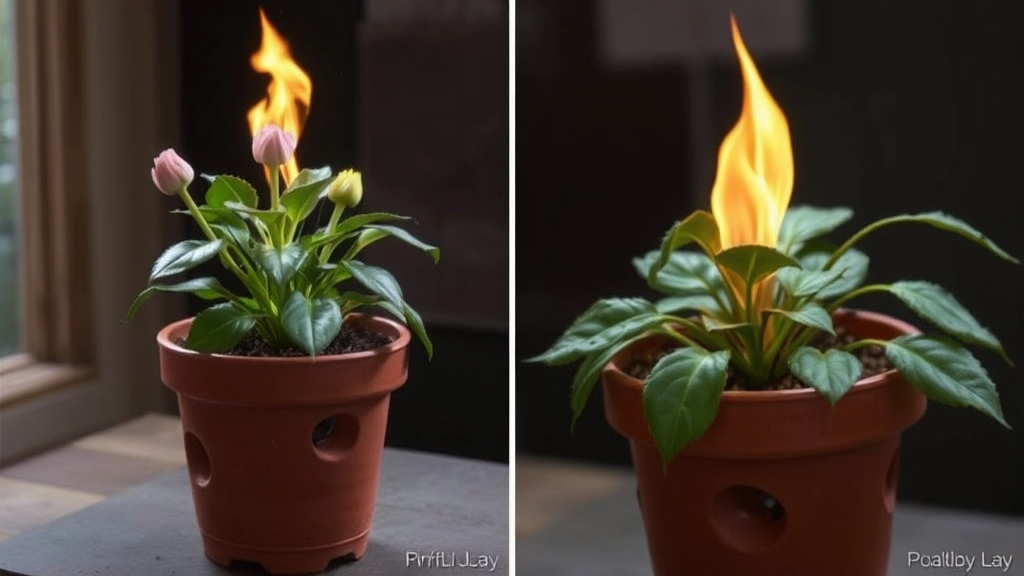
So, you’re wondering when to repot your Flaming Katy? It’s a common worry for plant lovers.
When your plant starts to look cramped in its pot or you notice roots poking out of the drainage holes, it’s time for a change.
Signs It’s Time to Repot:
- Root Bound: Roots are growing out of the pot.
- Stunted Growth: The plant isn’t thriving or blooming as it should.
- Soil Degradation: The soil looks compacted or depleted.
Best Time to Repot:
- Spring: This is the ideal time since the plant is waking up from dormancy.
- After Blooming: Wait until after your Flaming Katy has finished its blooming cycle.
How to Repot:
- Choose the Right Pot:
- Opt for a pot that’s 1-2 inches larger in diameter.
- Ensure it has good drainage holes.
- Prepare the Soil:
- Use a well-draining soil mix, like a cactus or succulent blend.
- Remove the Plant:
- Gently take your Flaming Katy out of its old pot.
- Be careful not to damage the roots.
- Inspect the Roots:
- Trim any dead or rotting roots.
- Shake off excess old soil.
- Place in New Pot:
- Add a layer of fresh soil at the bottom of the new pot.
- Position your plant in the centre and fill around it with more soil.
- Water Lightly:
- Give it a gentle drink of water to settle the soil.
- Post-Repot Care:
- Keep it in a bright spot but avoid direct sunlight for a week.
Seasonal Care for Indoor and Outdoor Growth
Caring for your Flaming Katy throughout the seasons ensures vibrant blooms and healthy foliage. Many plant enthusiasts worry about how to adapt their care routine as the seasons change. Here’s a straightforward guide to help you navigate seasonal care for both indoor and outdoor growth.
Choosing the Right Varieties for Your Home
So, you’ve decided to bring a bit of Flaming Katy magic into your space. But with so many varieties out there, how do you choose the right one?
First things first, think about your environment.
Consider Your Space
- Light Availability: Some varieties thrive in bright light, while others can tolerate lower conditions.
- Size: Do you have a small windowsill or a spacious patio? Some Flaming Katy types can grow quite large, while others stay compact.
Popular Varieties to Consider
- Kalanchoe blossfeldiana: The classic choice, known for its vibrant blooms. Perfect for beginners!
- Kalanchoe tomentosa: A fuzzy-leaved variety that adds texture. Great for a quirky touch!
- Kalanchoe luciae: Known as the âPaddle Plant,â this one has stunning, flat leaves that catch the eye.
Aesthetic Appeal
- Think about the colours that will complement your home décor.
- Some varieties offer a rainbow of colours, while others keep it classic with greens and whites.
Maintenance Level
- If you’re a newbie, opt for low-maintenance varieties that are forgiving.
- Experienced plant parents might enjoy the challenge of more demanding types.
Where to Buy
- Local nurseries often have a great selection and staff who can guide you.
- Online shops are handy, but make sure to check reviews for quality.
- For those looking to buy Kalanchoe Mother of Thousands, check out the best deals online.
Additionally, if you’re interested in learning more about specific varieties, you might find the top Kalanchoe succulent varieties and care tips helpful.
FAQs on Kalanchoe Flaming Katy Care
How often should I water my Flaming Katy?
Watering frequency depends on the season and your home’s conditions. In warmer months, you may need to water every week, while in cooler months, every two weeks should suffice. Always check the soil moisture before watering.
What are the signs of overwatering my Flaming Katy?
Look out for yellowing leaves, wilting despite wet soil, and a musty smell from the pot. These are red flags indicating overwatering and possible root rot.
What is the ideal temperature range for Flaming Katy?
Flaming Katy thrives best in a warm environment. Aim for 20-24°C (68-75°F) during the day and around 15-18°C (59-65°F) at night. Avoid exposing the plant to cold drafts or sudden temperature changes.
How do I maintain optimal humidity for my Flaming Katy?
Keep the humidity levels between 40-60%. Avoid high humidity as it can lead to fungal issues. If your home is too dry, use a pebble tray with water or a humidifier, but avoid direct misting on the leaves.
When is the best time to prune my Flaming Katy?
The best time to prune is right after your Flaming Katy has finished its flowering cycle. This helps promote bushiness and encourages new blooms.
How should I prune my Flaming Katy?
Use clean, sharp scissors or pruning shears. Trim back stems to just above a leaf node to encourage new growth. Remove any leggy growth and dead or damaged leaves to maintain a compact shape.
What common pests and diseases should I watch out for?
Be vigilant for mealybugs, spider mites, leaf spot, root rot, and powdery mildew. Regularly inspect your plant and take immediate action if you notice any signs of these issues.
How can I prevent pests and diseases in my Flaming Katy?
Keep your plant in a well-ventilated area, avoid crowding it with other plants, and regularly inspect for any signs of trouble. Proper watering and maintaining optimal humidity also help in prevention.
When should I repot my Flaming Katy?
Repot your Flaming Katy when it looks cramped in its pot or you notice roots poking out of the drainage holes. The best time to repot is in spring or after the plant has finished its blooming cycle.
How do I repot my Flaming Katy?
Choose a pot that’s 1-2 inches larger in diameter and has good drainage holes. Use a well-draining soil mix and gently remove the plant from its old pot. Inspect and trim any dead or rotting roots, then place the plant in the new pot with fresh soil. Water lightly and keep it in a bright spot, avoiding direct sunlight for a week.
References
-
How to Care for Kalanchoe Indoors
-
Kalanchoe Care: Growing Kalanchoe as a Houseplant
-
Kalanchoe: How to Grow and Care for Kalanchoe Plants
